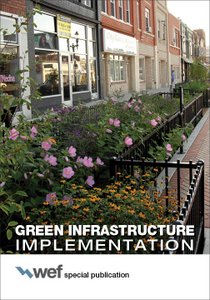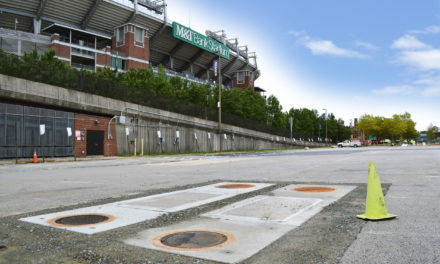Multidisciplinary approach and community engagement essential to green infrastructure implementation success
Brandon Vatter and Kelly C. Karll
In recent years, as communities look for ways to ensure the quality of their rivers, streams, lakes, and estuaries, stormwater management approaches have shifted from methods that concentrate, convey, and discharge runoff to receiving waters, toward methods that incorporate green infrastructure techniques which can closely mimic or restore natural hydrologic systems within the built environment.
Establishing a green infrastructure program in a community is a multiphase process and begins by understanding the community’s stakeholders and institutional landscape. Community stakeholders can include everyone from the mayor’s office, city/county planning department, local and state road agencies, and the water/sewer council to the parks department, local environmental groups, and small business owners.
An effective green infrastructure program must transcend multiple departments, agencies, and jurisdictions within a community. Understanding that green infrastructure represents a decentralized approach to managing stormwater and is no longer the responsibility of a single department or agency is a fundamental concept when navigating the institutional landscape to implement a successful green infrastructure program. Thus, embarking on a green infrastructure program must begin with the understanding that successfully transitioning from the traditional “stove pipe” stormwater management approach to a multifaceted program involving multiple agencies and disciplines will require significant training and education of those agencies and disciplines, program development, adaptive management, public outreach, and intergovernmental coordination and cooperation. Training and education is not limited to staff, but must also include local leaders to support and approve funding for these programs.
While this is a time-consuming process (on the order of three to five years to get established), the outcomes will include:
- Greater knowledge about green infrastructure;
- Support from team members and stakeholders for the green infrastructure program;
- Enhanced coordination across departments and agencies;
- Simplified approaches in the design and construction stages and short and long-term economic benefits;
- A proactive and affordable green infrastructure operation and maintenance program that appropriately shares costs and responsibilities; and
- A successful green infrastructure program that meets multiple and often diverse community goals, objectives, and performance requirements.
Forming and building the multidisciplinary team or stakeholder group are the first steps to navigating the institutional landscape, which can be facilitated by:
- Identifying all community stakeholders and inviting them to workshops or forums to educate them on the need for a green infrastructure program and the benefits of a program for the entire community.
- Actively engaging community stakeholders in the development of measurable goals and objectives to generate the enthusiasm essential to the success of the program.
- Continuing to engage community stakeholders by including them in setting the program’s performance requirements, which further fosters a collaborative environment.
Once stakeholders are engaged, the next step in developing a successful program is understanding their roles and responsibilities and the potential barriers to green infrastructure implementation that exist among the stakeholders. WEF’s recently published Green Infrastructure Implementation, which describes those various responsibilities in depth and explores how to address the barriers at the state, regional, and local levels, weaving in examples of successful community navigation and structure. Specifically designed to aid in the development of a green infrastructure program, the guide is an essential reference for anyone looking to embark on a new green infrastructure program or expand and grow their program.
Brandon Vatter is an associate and watershed/wet weather technology expert in the Cincinnati office of Hatch Mott MacDonald. Kelly C. Karll is a certified professional engineer with the Southeast Michigan Council of Governments.






